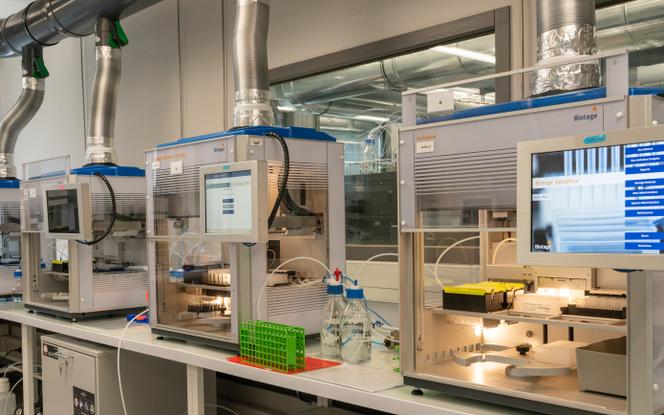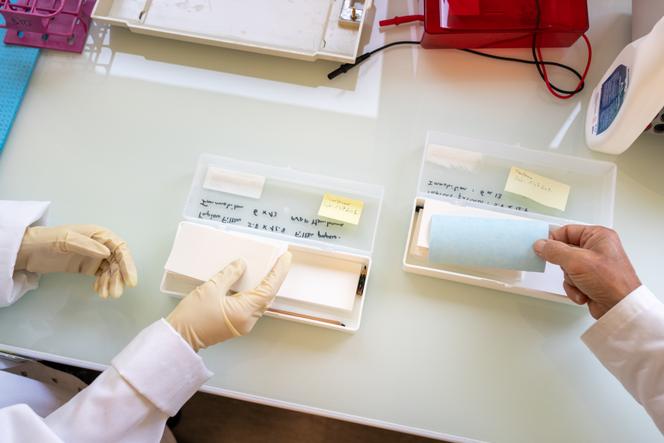
Dozens of specimens, color-coded and labeled, were lined up along the workbench in their racks, awaiting processing. Sitting at her table, a technician prepared the urine mixture to be injected into a mass spectrometer for analysis. Opposite, her colleague filled out sheets filled with barcodes. In the adjoining room, known as the “robot room,” the extraction equipment emitted a persistent hum. This undisclosed location on the Université Paris-Saclay campus in Orsay (Essonne) is home to the Laboratoire Antidopage Français (French Anti-Doping Laboratory, LADF), which Le Monde visited during a ministerial tour.
During the Olympic Games (July 26 to August 11), the LADF will be responsible for analyzing 6,000 blood and urine samples, and 2,000 during the Paralympic Games (August 28 to September 8). This is the equivalent of four months’ normal activity. It’s a remarkable feat for the site’s 40 employees, including some 20 technicians, who will be joined for the duration of the Games by some 60 colleagues from other laboratories accredited by the World Anti-Doping Agency (WADA), the sector’s regulator.
“The Saclay laboratory is the flagship of French anti-doping,” said Amélie Oudéa-Castéra, the French minister for sport and the Olympics, and Sylvie Retailleau, her counterpart for higher education and research, on June 20. Despite this, it nearly missed accreditation for the Games, an unimaginable blow for the host country and the laboratory that developed the test for erythropoietin (EPO) in the early 2000s.
To maintain its position, France had to comply with the World Anti-Doping Code. As required by WADA, the laboratory was legally detached from the national doping control organization, in this case, the Agence Française de Lutte contre le Dopage (French Anti-Doping Agency, AFLD), by ordinance dated April 21, 2021.

Its main task was to show that it could handle the volume of samples required during the Games, as mandated by the two regulatory bodies: the International Testing Agency (ITA) – created in 2018 by the International Olympic Committee and responsible for the anti-doping program during the Games – and the International Paralympic Committee, solely responsible for the Paralympic edition.
DNA fingerprint comparisons
However, this was impossible in the cramped, outdated premises used until spring 2023 at the Paris region’s Centre de Ressources, d’Expertise et de Performance Sportive (Centre for Sports Resources, Expertise and Performance) in Châtenay-Malabry (Hauts-de-Seine). This prompted a move to Saclay, where, after several months of refurbishment, only slightly delayed by Covid-19, the site has been operational since mid-May 2023. It came in at a cost of nearly €13 million, paid for by the French government.
You have 62.18% of this article left to read. The rest is for subscribers only.